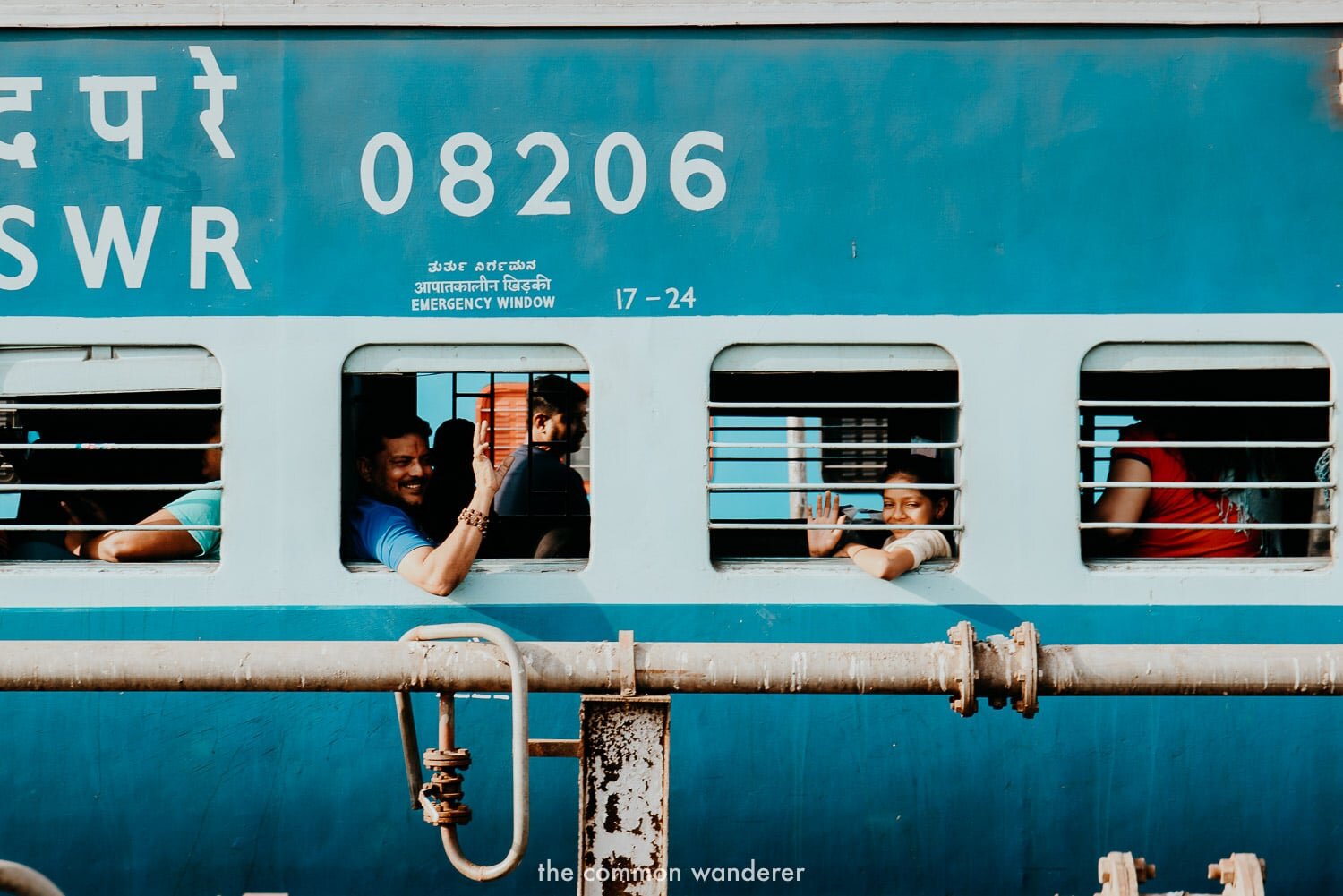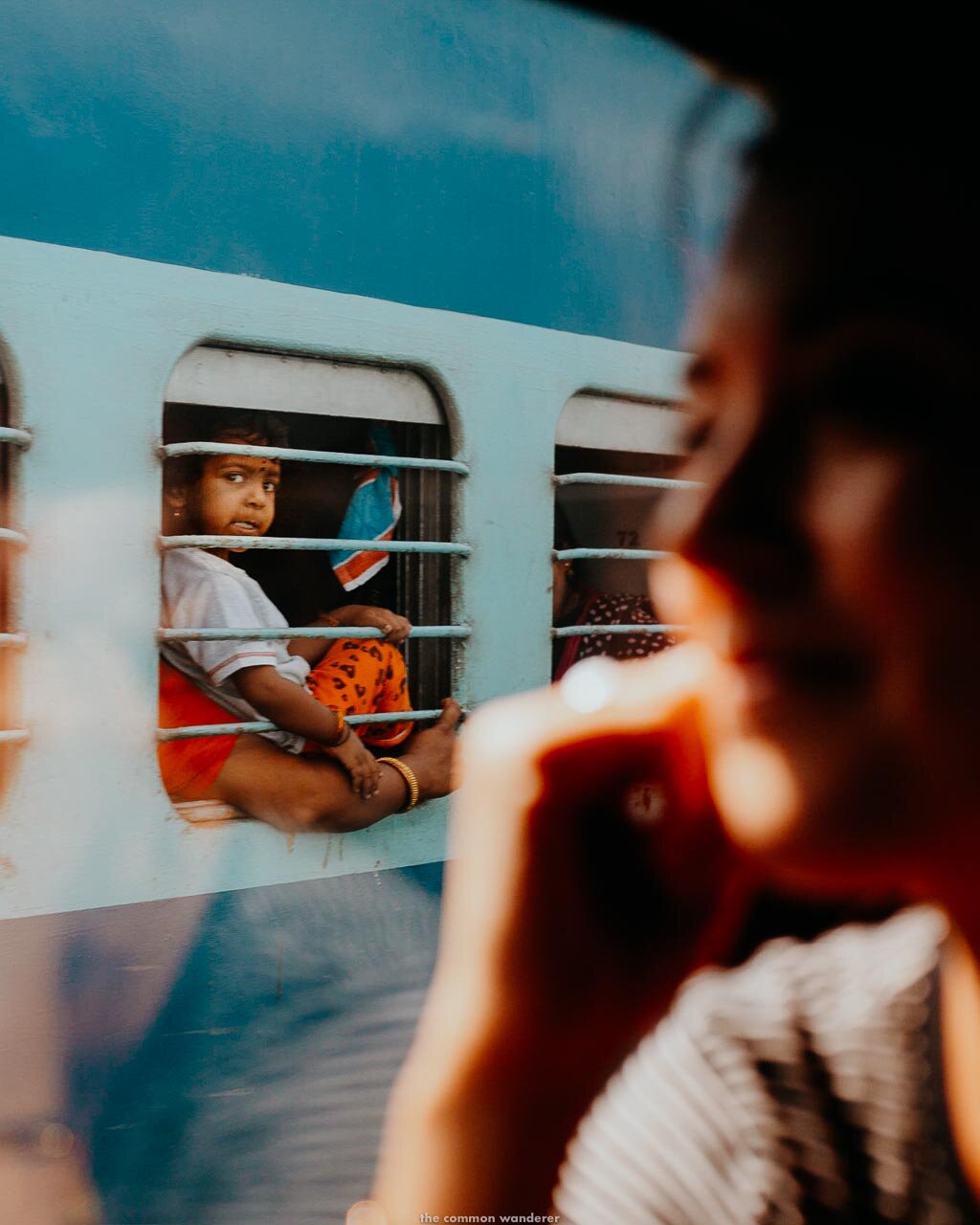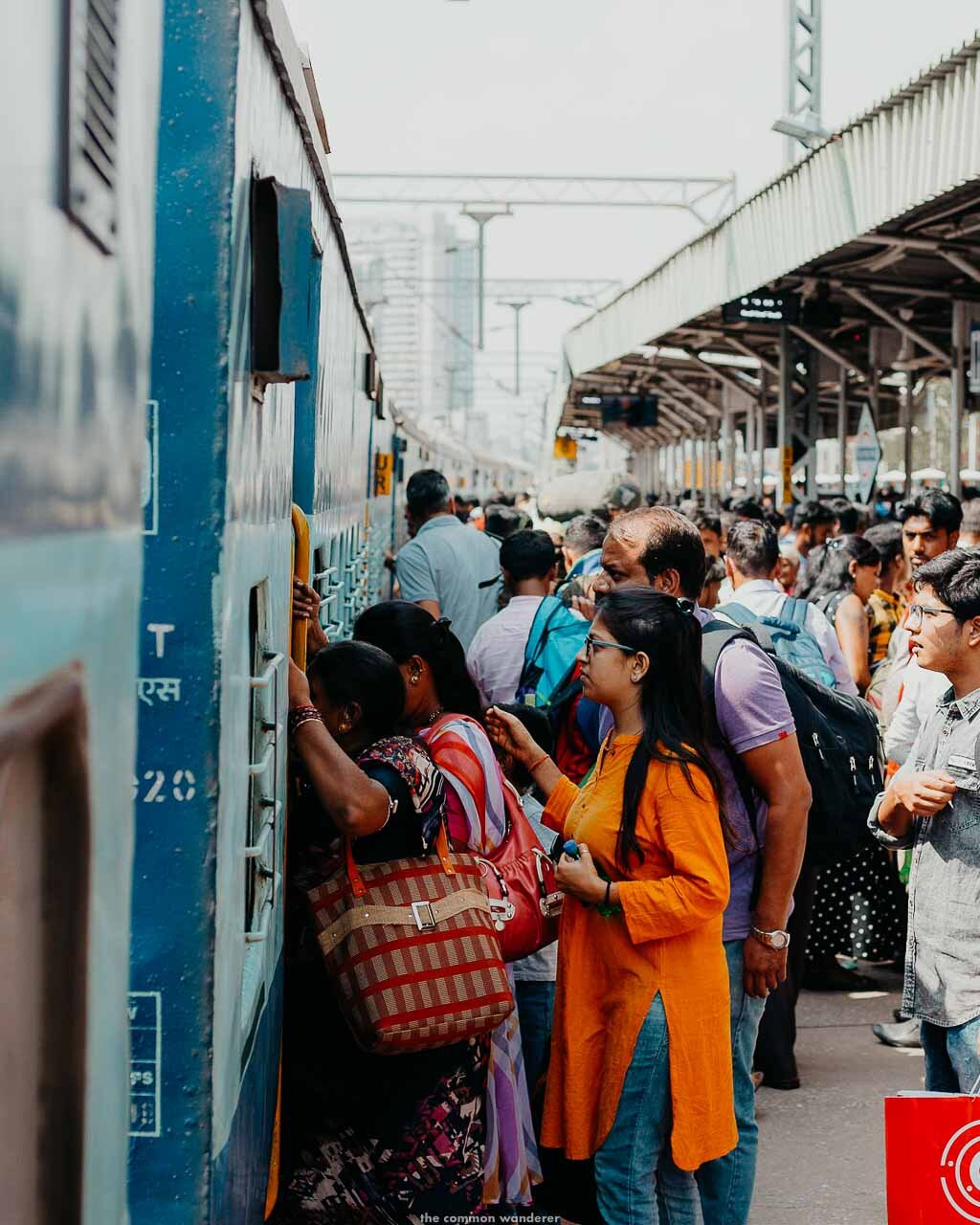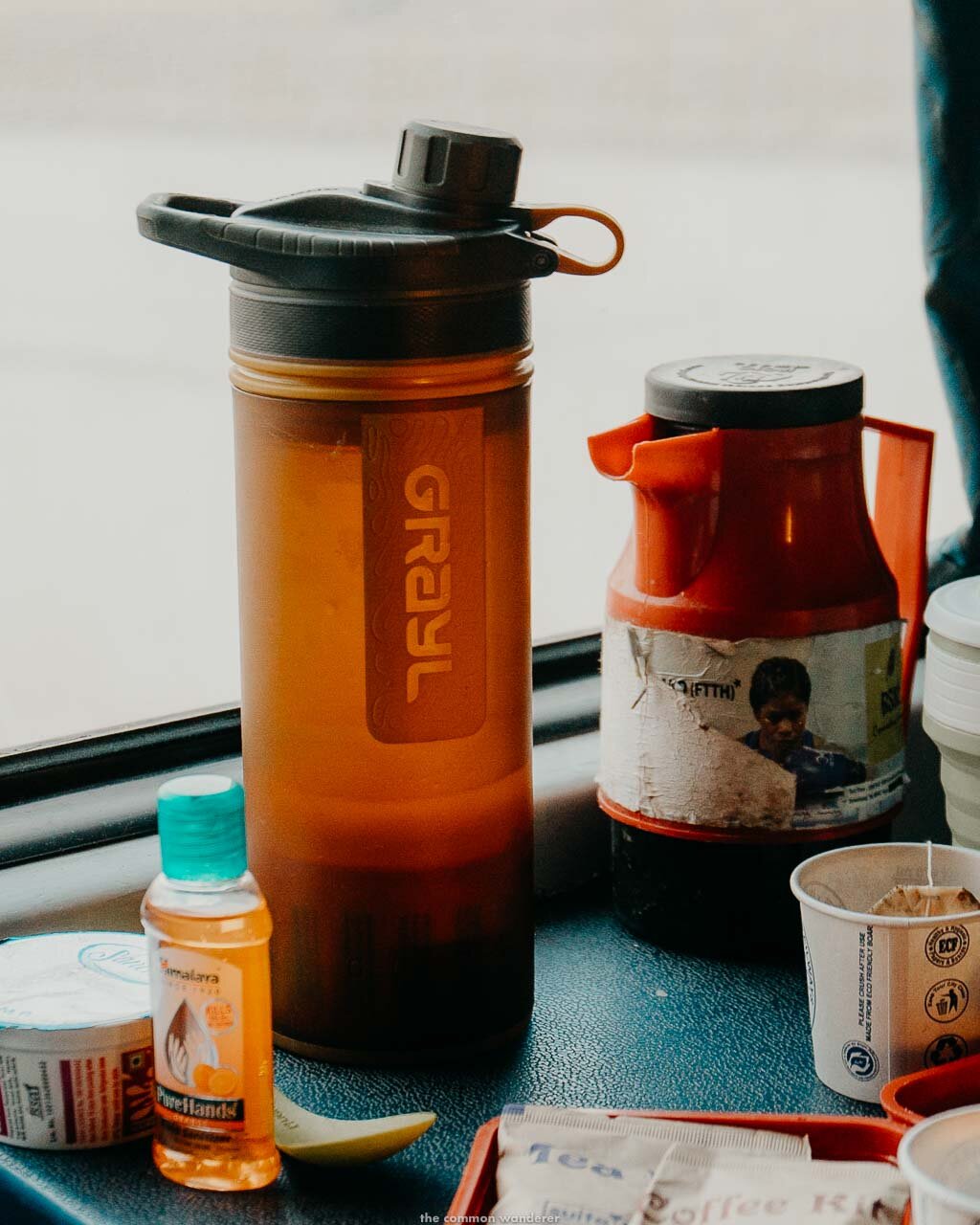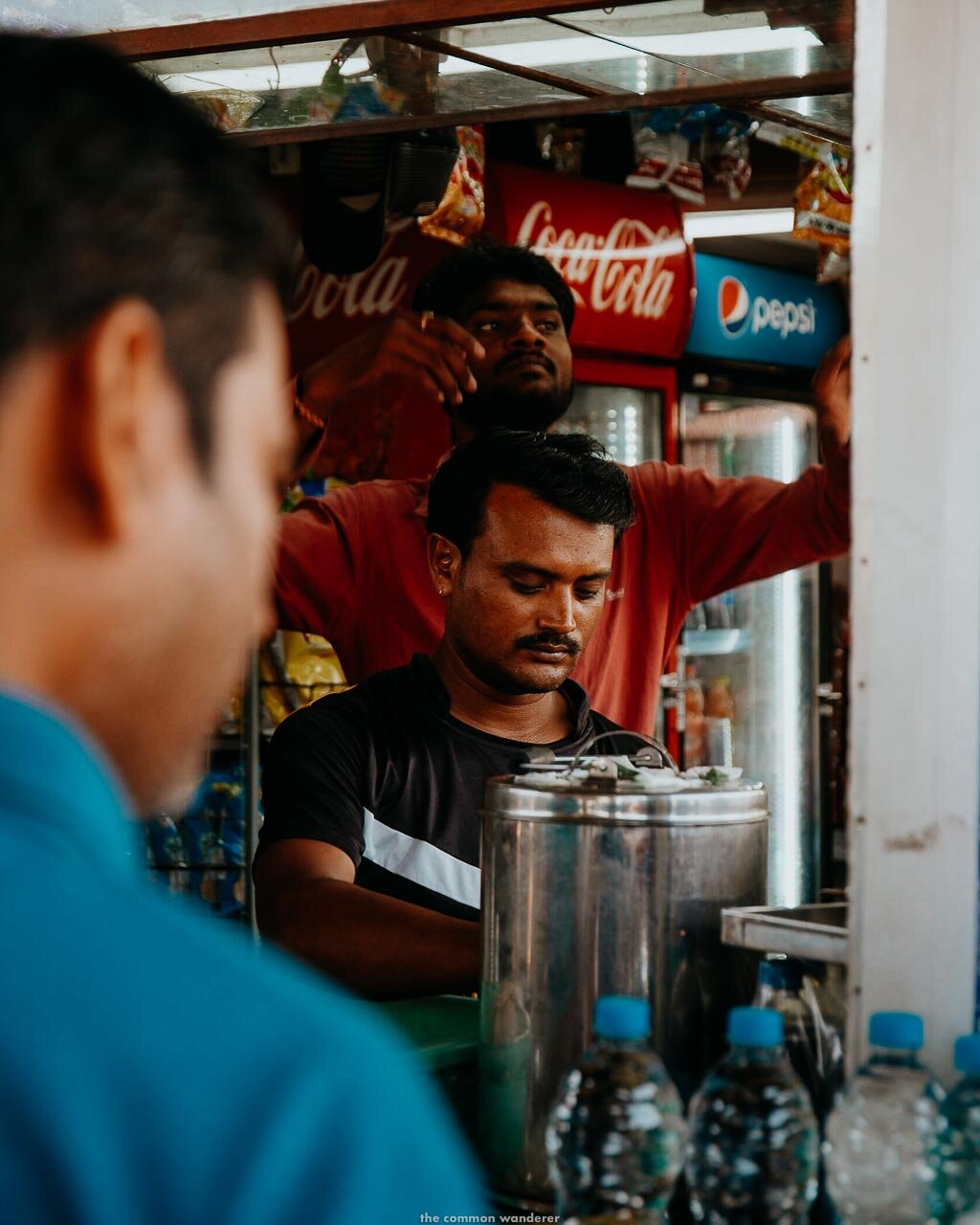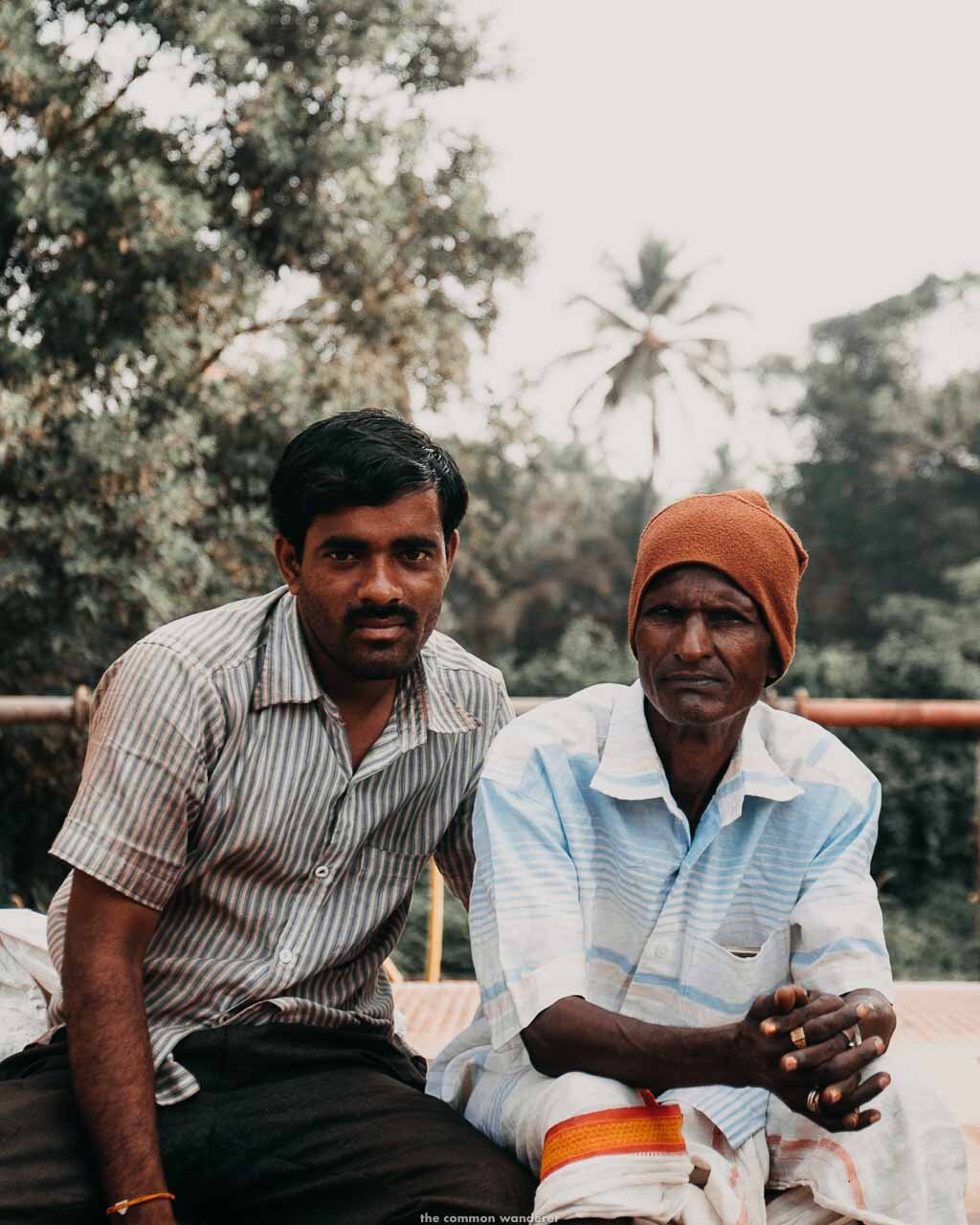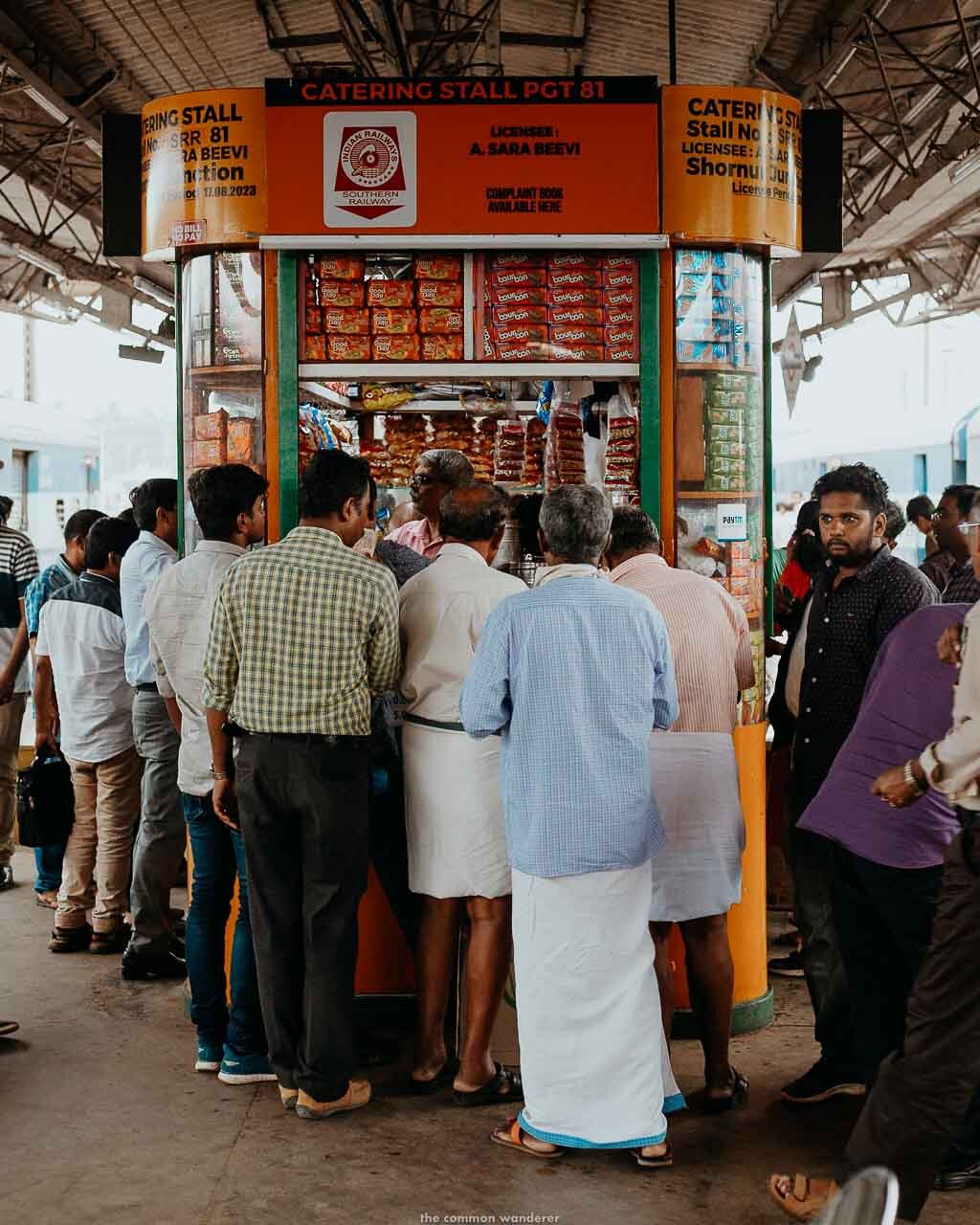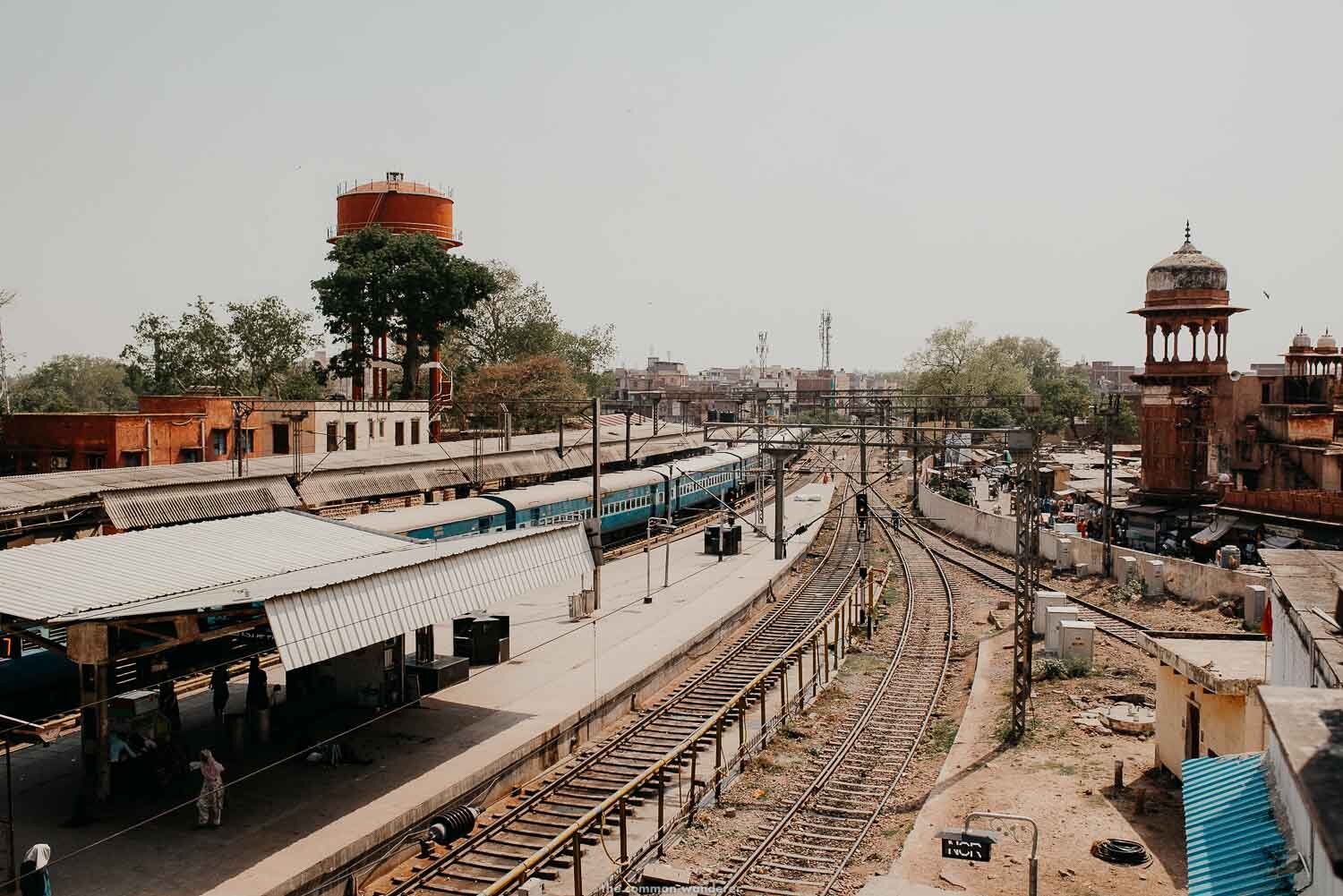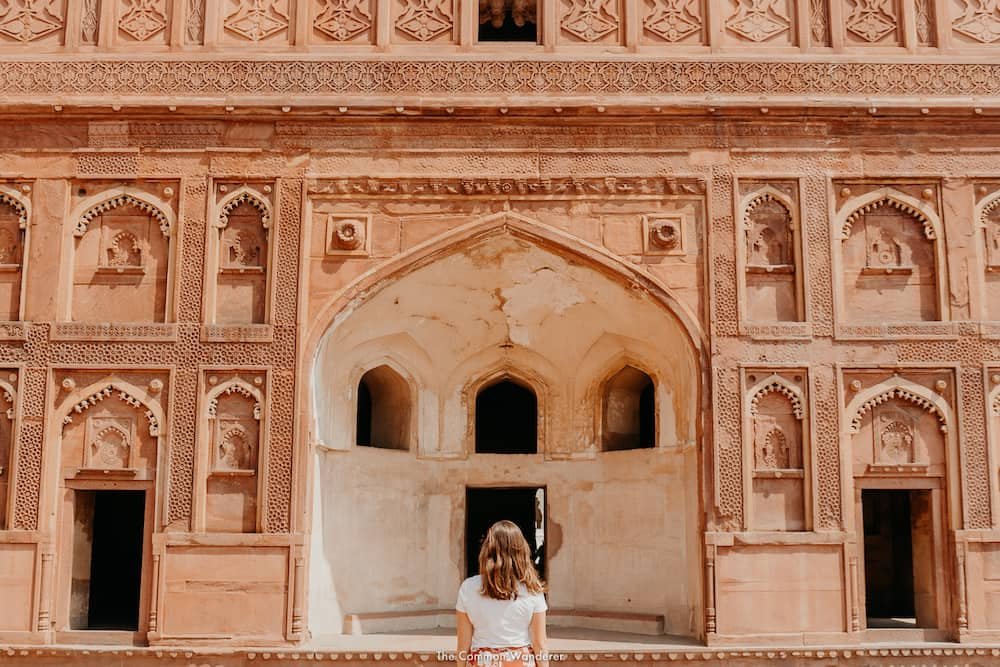India Train Travel: Our Beginner’s Guide to Mastering India's Railways
The great Indian train journey is an exciting and colourful adventure, but it does require some planning. From booking tickets and which class to choose, to travel safety, food and luggage essentials, our guide to India train travel has everything you need to know.
We’re massive fans of train travel.
There’s just something about watching the world go by from your window that evokes a true sense of adventure, and over the years it’s been our choice of transportation through Europe, and in countries such as Sri Lanka and Myanmar.
When it came to our first trip to India, we knew we had to experience the country via its famously captivating railway network. And boy, are we glad we did.
Our 21-day journey from Delhi to Kochi with G Adventures was one of, if not the craziest, most chaotic, inspiring, and enjoyable adventures we’ve ever embarked on (read alllll about it here!).
That said, travelling India via train can be a tricky beast to navigate.
The network is one of the most expansive in the world, servicing upwards of 18 million passengers daily, on 20,000 trains, operating on 67,000kms of track. Needless to say, for total novices like us, it can all be a little overwhelming.
Thankfully, we survived, and also picked up a number of important Indian railway travel tips along the way. Here’s everything you need to know before travelling by train in India.
LOVE OUR PHOTOS? Edit like us with our Indian Odyssey Preset Pack, and Tropical Bliss mobile video filters, inspired by the tropical beauty and colour of this beautiful country
INDIA TRAIN TRAVEL | OUR ESSENTIAL TRAVEL TIPS
#1 TRAIN TRAVEL IS BY FAR THE BEST WAY TO SEE INDIA
To travel by train in India is, essentially, to journey through (and with) a microcosm of the entire country.
From the second you board to the minute you alight at your journey’s end, the whole experience is intense, colourful, confronting, uncomfortable, sweaty, smelly, loud, exciting and wonderful.
Unlike flying, where you’re trapped in a row with a few other strangers, served bland food, and generally bored and cramped up within minutes of sitting in your seat, train travel gifts you an insight into Indian society and its structures.
Families share food with other passengers, chaiwallahs traverse the train selling steaming cups of tea, signs blur past in foreign script, and unique landscapes flick past the window like a film.
The sights, smells and sounds of India and her people reveal themselves to you with every turn of the clacking wheels.
Simply put, there’s an energy on the trains and platforms of the Indian rail system that just doesn’t seem to exist anywhere else in the world.
#2 BOOK YOUR TICKETS WITH INDIAN RAIL DIRECTLY TO AVOID ANY PROBLEMS
In a country of over 1 billion people (let that sink in!), guaranteeing yourself a seat/bed on one of the over 20,000 daily trains can be a real struggle.
If you’re keen to avoid the stress of trying to organise these yourself, we’d highly recommend travelling with a tour company like G Adventures. We joined them on their Delhi to Kochi by Rail trip, and every single seat and bed was arranged for us. We loved our tour with them, and for first-timers to India or travellers who would prefer to have everything organised, it’s a perfect match.
For independent travellers, you’ll absolutely need to book well ahead of time to secure your seats and beds.
While there are plenty of online ticketing platforms (like 12go.asia) to book your seats with, we’d recommend booking directly with the Indian Railways website. Especially considering all booking platforms eventually send you here anyway. This also means you’re assured of your ticket, seat, and prices without any worries.
You’ll need to create a profile on the Indian Rail booking system before you can secure your tickets. Once you’ve made your profile, you can purchase tickets for any train, at any time. Just keep your login details somewhere safe!
Also, if you’re booking for family, friends, or a large group, be sure to book at the same time to avoid being seated apart.
#3 INDIAN RAILWAYS HAVE A FOREIGN TOURIST QUOTA
To support India’s drive to increase tourism, a foreign tourist quota has been implemented by the Indian Railway Catering and Tourism Corporation (IRCTC). Essentially, foreigners have a certain number of seats allocated to them, making the process of securing a seat easier.
Available classes of travel under the foreign tourist quota are Executive Class (EC), 1st Air Conditioned (1AC) and 2 Air Conditioned (2AC).
Tickets can be booked up to 365 days in advance, however, if you’re booking within the Advance Reservation Period (120 days), seats are allocated immediately. Outside of this time, IRCTC will provide confirmation at the opening of the ARP.
Like above, tourists looking to purchase tickets under the foreign tourist quota must register on the Indian Railways websites at www.irctc.co.in. Once you’ve got an account, you may need to have an active mobile number (either Indian or foreign) to receive any confirmation notifications.
#4 KNOW YOUR INDIA RAIL CLASSES AND WHICH ONE YOU WANT
Take it from us, picking the right class for your Indian train travel will have a huge impact on your overall enjoyment and comfort
The Indian rail classes are as follows:
1AC | Air-conditioned first class with a private room, with washbasin and locking doors. These can be 2 or 4 berth
2AC | Air-conditioned two-tiered beds, 4 people to a berth, with open cabin (closed by a curtain). Our recommendation for overnight trains
3AC | Similar to 2AC, with three-tiered beds in the AC cabin, and 6 people to a berth
EC | Executive chair class, air-conditioned with food and drink provided. Only on Shatabdi Express trains
CC | Chair Class, padded reclining seats with air conditioning. Our recommendation for day trips
SL | Sleeper Class, non-air-conditioned tiered berths, and the least comfortable of all Indian train classes. The cheapest option, but also the most authentic...
2nd class | unreserved seating (aka free for all!)
If travelling overnight, we’d recommend the 2AC or 3AC options, depending on your budget. The cabins are clean, comfortable and air-conditioned, which in India, is absolutely important! Some overnight trains, such as the Rajdhani Express from Delhi to Mumbai, include food in the fare (dinner and breakfast). For others, it is possible to order food on board, including curries and Biryani. Check this at the time of booking.
The toilet facilities are cleaned over the duration of your journey, and the overall comfort is actually quite good. Power sockets to charge any devices are also available in your cabin.
If travelling during the daytime, we recommend travelling on the EC or CC options, which are basically the chair equivalent of your 2AC class and provide large, comfortable seating and air-conditioning. Each carriage has powerpoints to charge your device.
If you’re on a budget, Sleeper Class could be a good option, however, be prepared for quite an intense experience!
more train adventures | our guide to sri lanka’s kandy to ella train
#5 UNDERSTAND YOUR INDIAN RAILWAYS TICKET
Like flight tickets, train tickets can be a little confusing at times with a whole mish-mash of letters and numbers that mean god knows what.
Thankfully, we managed to get the inside word from our G Adventures CEO (Chief Experience Officer), Manny on how to read and understand the Indian Railways tickets.
Look out for the 10-digit ‘Passenger Name Record' (PNR) number on your ticket, which provides information on your coach and seat number, fare class, train name and number, booking status, boarding and arriving time, and overall journey time. As you can, it basically holds the answers to any and all questions you may have regarding your journey.
Check your PNR number at the IRCTC website, at Train PNR status, or simply punch it into Google to find the relevant details.
The details found through your PNR will help you at train stations, as you’ll know all the important details (platform and carriage details, etc) well ahead of time. Knowing where to stand for your carriage is super important too, considering Indian trains are about 1km long and you actually can’t move between carriages easily.
#6 ESCAPE THE HEAT BY BOOKING AIR CONDITIONED CARRIAGES
During our month in India, we experienced average temperatures of 35 - 40 degrees celsius.
It’s almost impossible to describe the feeling of backpacking in that level of heat, let alone travelling via trains. Even at night, the temperature often exceeded 35 degrees celsius in the Golden Triangle.
Trust us when we say this… booking an AC train car is absolutely worth it.
ready for your own train adventure in india?
#7 PACK SOMETHING WARM IF YOU’RE TRAVELLING IN AC CLASS
Okay, so we just told you to travel via AC because it’s too hot outside, and now we’re telling you to pack something warm. But there’s a completely rational reason for that: the AC on Indian trains is so good that it’s actually too good!
At the beginning of our trip, there were a few times we were left shivering due to the icy temperature inside the carriage. Eventually, we took an extra layer on board just to keep ourselves comfortable.
If you’re travelling in any AC class, consider keeping an extra layer handy to keep yourself warm! Fortunately, sleeper trains provide nice woollen blankets which should keep you warm, even if the AC is at its most powerful.
MEMORIES OF INDIA | WATCH OUR LATEST YOUTUBE VIDEO
India was without a doubt the most colourful and chaotic place we’ve ever visited.
Let our latest Youtube video ignite the senses and get you excited for a trip to India.
ps. don’t forget to subscribe to our channel!
#8 INDIA RAIL SAFETY | IS IT SAFE TO TRAVEL ON INDIAN TRAINS?
This is a tough one for us to answer because we personally never experienced anything negative or unsafe over our month on the trains in India.
This was actually quite a surprise to us given everything we’d read about safety in India in the past. More to the point, the trains were as safe, clean, and well maintained (particularly in 2AC) as any train we’d been on in Australia or the UK - if not more so!
Even the train stations seemed safe - all were staffed well into the late hours, and all were busy enough for any issues to be dealt with immediately. Like most stations around the world, there are a number of beggars and street kids around the station, so you will need to be wary of your belongings.
While our experience was wholly positive, it would be remiss of us to say that incidents don’t occur here. In fact, our G Adventures guide Manvendra recounted a story from a few weeks earlier, when a tour member he was leading woke up to find someone stealing her bag.
Long story short, the bag got stuck in a doorway, and the thief dropped it before jumping out of the carriage and limping away looking pretty injured.
All’s well that ends well in that scenario, but it is a tale of caution that train travel isn’t always peachy (like anywhere in the world).
As with any travel, you absolutely need travel insurance when travelling in India. The unexpected can and does happen, and you don’t want to be caught out here.
BOOK | We use World Nomads travel insurance
Sri Lanka’s stunning sights | a guide to the Nine Arch Bridge, Ella
#9 HERE’S HOW TO KEEP YOU AND YOUR VALUABLES SAFE ON INDIAN TRAINS
As we’ve said above, we had absolutely no issues when keeping our valuables safe on Indian trains. We were proactive (we’ve learnt from almost four years on the road!), and made sure we secured our baggage with locks, kept our valuables close, and wore our essentials, such as money, passports and phones, on our body.
It also helped that we had a local guide who knew the Indian rail network well and travelled with a tour company that was able to secure 2AC or CC trains for both safety and comfort.
Regardless of our experience, or the experience of others, always follow the below safety precautions when travelling via rail in India:
Lock up your valuables, and secure your luggage to the racks underneath your bed/seat. We’d recommend this safety chain
Women will need to stay covered up, including legs and shoulders. This is a big one.
Be vigilant - if something doesn’t seem right, alert your carriage boy or other passengers
Sleep with your most prized possessions - wallet, phone and passport on your body, and preferably in your front pockets or a pouch around your neck instead of your butt pocket.
Sleep with your bags behind your head if you’re worried
Never fight back if you’re approached with a weapon, it’s just not worth it.
Solo travellers - buddy up and keep an eye on each other
Never, ever lose sight of your valuables at a train station. This includes asking someone to mind your things while you duck to the loo.
Again, travel with travel insurance. If your belongings are stolen or you’re injured in any way during your trip, your travel insurance has your back. Check out World Nomads.
#10 SAFETY FOR SOLO FEMALE TRAVELLERS ON INDIAN TRAINS
Travelling alone as a woman is certainly not the norm in India, and the country can be a hard place to travel as a solo female traveller. Expect to attract (sometimes unwanted) attention, especially outside the major cities like Delhi or Mumbai.
Fortunately, awareness of and commitment to improving women’s overall safety in India is gradually growing, and we did witness a number of initiatives being implemented (dedicated incident report phone lines for women, female-only carriages, etc) that show that things are (very slowly) improving.
That being said, it is an unfortunate reality that there’s still a very long way to go here before women enjoy the same privileges that men do. To keep safe as a solo female traveller follow the below tips and advice, our GAdventures guide, Manny, had the following tips:
Organise an Indian SIM card | Being connected as a solo female traveller in India is probably the most important thing you can do. It means you can keep friends/family updated on your whereabouts, quickly contact police/emergency services if you encounter any issues, use Google Maps to thwart any unnecessary detours, book taxis/Uber, call hotels or guesthouses etc. For trains, having a local SIM will also allow you to check the status of your train via the PNR number on your ticket, so any delays or late arrivals can be managed accordingly.
Know your plans in advance | We recommend planning at least 1-2 days in advance, so you’re not lost or unsure when arriving at a new destination. That way, you can organise transport/pickups ahead of time, and manage any uncomfortable situations on arrival.
Get the upper bunk when travelling overnight | Away from prying eyes and most importantly, hands, a bed on the upper bunk is the place you want to be. It’s out of most people’s line of sight, and easy to turn your body and hideaway, especially at night, to avoid any unwanted attention. If your ticket isn’t for the upper bunk, check whether a fellow traveller or local might want to swap with you.
Make friends with the local ladies + families in your carriage | On the whole, Indians are extremely friendly and caring, and will keep an eye out for you if asked. If you’re travelling alone, strike up a conversation with another woman or family and build rapport. That way, asking them to look out for you won’t be uncomfortable, and you’ll have a support crew should you need it.
If you’re really worried, let your carriage boy know that you’re travelling alone and feeling a little uncomfortable, and they’ll help manage the situation by moving you or keeping an eye on your safety.
On the whole, you’ll find that - just like anywhere else in the world - 99.99% of the people you’ll encounter on the trains will be so friendly and welcoming you’ll feel right at home. Be alert, but not afraid.
#11 WHAT’S THE FOOD SITUATION LIKE ON INDIAN TRAINS?
If, like Mim, you’re always thinking about your next meal, you’ll probably want to know all about the food situation. Fortunately, this is India, and (good) food is available just about anywhere at any time.
Firstly, if you’re catching trains long distances, always pack snacks for the ride. Our go-to was generally some fresh bread, paratha or samosa served in newspaper. If we were travelling overnight, we’d try to eat a local meal beforehand.
On some overnight trains, such as the Rajdhani Express from Delhi to Mumbai, dinner and breakfast were included in the fare. For other trips, it’s possible to order food on board, including curries and Biryani, pretty cheaply. Be sure to check if this is possible before you board the train to avoid going hungry though!
Surprisingly, the food on Indian trains was quite good and pretty similar to what you’d get on a flight. Dinner was simple curries like paneer tikka, dal tadka, rice and roti, and ice cream for dessert. Breakfast, on the other hand, was distinctly average. Omelettes or veggie fingers, bread and curd were served and to be honest, we rarely ate it.
There are generally vendors running up and down the carriages selling food and beverages, including chai (ie. the best thing ever). These are generally samosa or roti, bottled water and sodas (please stay away from using plastic bottles!). Note that these snacks do come with some risk of getting sick, as you have no idea how or when they’ve been prepared… but what’s travel without a little risk-taking, huh?!
We’d recommend not buying food from station platforms as it’s generally super unhygienic. We saw a number of rats running over food at a few different stations! If you must, only purchase things prepackaged, like crisps, dal snacks, or biscuits - and check the package hasn’t been chewed or damaged first.
Bonus tip | Our G Adventures guide, Manny’s ultimate advice was to pack enough food to last a delay - Indian trains are known to be pretty unreliable, and severe delays are common. Being stuck on the train without food for hours on end isn’t pleasant for anyone, especially is hangry is a thing for you.
#12 WHAT ARE THE TOILETS LIKE ON INDIAN TRAINS?
Having seen the state of toilets in some parts of India, we weren’t holding out for anything usable on the trains. While we weren’t pleasantly surprised, we’re also happy to report that the toilets on Indian trains are so much better than we expected.
On all major trains, both western and squat toilets exist. They’re cleaned regularly and are completely manageable, however, bring your own toilet paper. On some regional/third class trains, only squats are available.
On overnight rail journeys, toilets and washrooms are cleaned during the night, so if you want to have the cleanest possible bathroom experience, be ready to head down there around 6 am. From 9 am onwards they’re generally pretty grubby.
Another sneaky tip is to work out where the first-class carriage is (usually the middle of the train), and use their toilets during the train ride. They’re cleaned very regularly and rarely have a line-up.
We’d also suggest packing a hand sanitiser to use after you do your business - you can’t always guarantee that there’s water available from the taps (nor, depending on its colour, that you’ll want to actually stick your hands in it!).
magical udaipur | our complete guide to the city of lakes udaipur
#13 YOU’LL PROBABLY BE ABLE TO CHARGE YOUR DEVICES ON INDIAN TRAINS
Fear not, 21st-century travellers. There’ll be no flat phones on Indian trains!
Each train we travelled on over 21 days in India had power sockets to charge our devices. Better yet, most had a range of plugs, including European, English and Indian.
For overnight/sleeper trains, you’ll find 2 (sometimes 4) power sockets per sleeping cabin. It can be a battle to get access, so oftentimes you’ll need to ask your fellow cabin-mates to be able to charge your device. On seated trains, there’ll generally be two power sockets per row of seats (one either side of the train).
In some cases, power sockets aren’t able to hold the adapter and charger in place, so try and bring a lightweight adapter along with you!
Another solution, which we probably used more often, is to bring a power bank to charge your devices. We use this Anker battery pack, which has saved our phones countless times.
BUY | Anker battery pack
#14 DO YOU NEED TO TIP ON TRAINS IN INDIA?
Tipping culture is generally pretty big in India, however, it’s not compulsory to tip staff on Indian trains. In some cases, it’s actively discouraged too.
That being said, if you’d like to tip the carriage boys, cleaners or food staff for exceptional service, feel free to do so.
On more than one occasion we tipped the train staff, especially during our seriously delayed train ride from Hospet to Mysore, where the carriages and toilets were kept very clean over 15 odd hours!
riding the rails: myanmar’s fascinating yangon city circle line
#15 TRAIN STOPS IN INDIA | HOW LONG DO YOU HAVE TO GET ON OR OFF THE TRAIN?
Picture this: you’re craving a delicious chai, so upon arrival into a station you jump off to grab yourself a delicious local brew.
Before you know it, your train is moving again, and despite your best attempts to jump aboard, you miss it and you’re stuck in the middle of nowhere, with just the money in your pocket. Not ideal, right?
Fortunately, there is a method to the number of time trains remain on the platform:
Main stations have around 10 minutes stop time. Perfect time to grab a chai!
Mid-range stations generally have a 2-minute stop time, just enough to get yourself (and everyone else on the platform) on and off the train
Small, regional stations only have a 1 minute stop time, which means you’ve got to be very quick/pushy to make it on board
Of course, there are exceptions to the rules above - we stopped at some stations for over 30 minutes to manage congestion on the tracks, however, if you stick to the above rules, you shouldn’t miss your train/be left behind.
Check with the carriage staff or other travellers before you go jumping off!
#16 KNOW YOUR SLEEPING TIMES ON OVERNIGHT TRAINS IN INDIA
There’s an unofficial rule on Indian night trains that the lower seat/bunk in a cabin is a communal space between the hours of 8 am and 10 pm.
If you are on the bottom bunk (like Mark was, every.single.time), expect to squash up and share it with your cabin buddies.
Likewise, between the hours of 10 pm - 8 am, you’re able to have the bed set up and sleep to your heart’s content.
If you disobey the rule, expect to have people sitting on your bed, in a not-so-subtle attempt to get you to respect the train rules!
#17 WHAT TO DO WHEN YOU ARRIVE AT YOUR DESTINATION
Upon arrival at any station in India, you’ll be met by a million touts or drivers offering their services. It can be quite confronting and uncomfortable, especially in the early days of travelling in India.
Unfortunately, the only way to get to your hotel or hostel is often via taxi or tuk-tuk. In all likelihood, you’ll be ripped off unless you can haggle well, or are a seasoned traveller to the region.
Always confirm or negotiate your fare upfront to avoid any inflated fees once you arrive at your accommodation. It’s always a good idea to ask a local what sort of fee to expect before you arrive to avoid getting ripped off.
Alternatively, pre-book a taxi via your hotel and negotiate the fee upfront, or use an app like OlaCabs or Uber, which can be arranged prior to your arrival (or use Ola Cabs).
We actually recommend this option, especially if you’re a solo female traveller or if you arrive late at night, as it is far safer than taking a tuk-tuk straight off the street.
#18 PORTERS ARE AVAILABLE AT TRAIN STATIONS (FOR A FEE)
Each train station has a team of porters who will willingly carry your heavy bags to your platform - for a fee. They’re easily noticeable, thanks to their red turbans or outfits.
This can be helpful if you’re in a large group, or spend your life travelling the world, and therefore have VERY heavy backpacks (like us!).
Expect to pay a fee of around INR 200 - 300 per bag.
#19 INDIAN TRAINS ARE GENERALLY CLEAN
India takes huge pride in its train network and the cleanliness of their trains is definitely a testament to that.
The cleanliness and comfort far exceeded our expectations, and we happily recommend trains as the best form of transport between destinations in India.
We feared our overnight train experience would err on the side of grubbiness, but the sheets and blankets on overnight trains are very clean and each person is provided clean sheets upon boarding the train.
The carriage employees do a very good job of keeping each carriage clean. They clean the coach, toilets, and washrooms at least twice a day and rubbish are disposed of.
If you do come across any cleanliness issues, inform your carriage worker who will rectify the issue immediately.
TRAIN TRAVEL IN INDIA | ESSENTIAL INFORMATION
HOW TO TRAVEL AROUND INDIA
Despite being highly seasoned travellers who have spent the last 4+ years on the road, we actually found India a pretty confronting and intense place to travel.
We’d highly recommend joining a group tour - like the same Delhi to Kochi by Rail tour we did with G Adventures - which gives you a ready-made group of friends/support network, and a local who A) can help organise everything and B) knows exactly what’s up.
BOOK | Delhi to Kochi by Rail tour
WHERE TO STAY IN INDIA
Accommodation in India can be a real treat. This is basically the home of luxurious hotel stays, after all!
Our adventures took us through a mix of former palaces, boutique hotels, beach resorts and of course, a few standard hotel rooms too.
Search for your perfect Indian hotel dream on Booking.com
ESSENTIAL PACKING ITEMS FOR INDIAN TRAIN TRAVEL
Riding the rails in India comes with a unique set of needs when it comes to packing. To help you have a comfortable, happy journey, we recommend bringing the following items with you:
Tissues/toilet paper
Earplugs (the snoring can be reaaaal!)
Eye mask (for the time’s people “accidentally” switch on all the lights in your cabin).
Hand sanitiser - not something we’d actually recommend normally, but in India, we think it’s a bloody great investment.
Reusable water bottle - we use the Grayl water purification bottles, which allows us to fill up from any water source, anywhere in the world (including train taps!).
A spork - to cut down on unnecessary plastic usage at mealtimes.
A good book - we love reading about the country we’re in, while we’re in it. Check out some of the best-selling India books here.
A warm layer and some good socks - the air con can get quite cold in the cabins!
TRAVEL INSURANCE FOR INDIA
If you can't afford travel insurance, you really can't afford to travel. As the current global situation has taught many people, things can go wrong anywhere in the world - and insurance is often the only way of mitigating any issues with minimal expense or stress for you.
Here are our recommendations, based on 8+ years of full-time travel:
FOR TRAVELLERS | HeyMondo - COVID-19 coverage, comprehensive travel + medical insurance, an app with 24-hour medical support, and no out-of-pocket fees. *Get 5% off your policy by booking through our link here.
FOR DIGITAL NOMADS | SafetyWing - COVID-19 coverage, comprehensive travel & medical, and policies can be purchased while already abroad.
CAR INSURANCE | Insurance4CarHire - a great annual car insurance policy
EXPERIENCE INDIA WITH THESE ESSENTIAL POSTS
INDIA ITINERARY | Our detailed three-week India Itinerary
TRAIN TRAVEL IN INDIA | Everything you need to know before catching trains in India
COWS, CURRIES AND COLOUR | A must-read from our three weeks travelling India by train
BEAUTIFUL UDAIPUR | Our guide to magical Udaipur
TRAVEL INSURANCE | Don’t leave home without travel insurance (seriously, don’t!). Click here to get the best deals with World Nomads, our trusted travel insurance provider
PHOTOGRAPHY | Love our photography? Wondering what gear we use to get all of our photos around the world?
Click here to view our detailed photography gear guide, as well as our top travel photography tips!
RESPONSIBLE TRAVEL | Responsible travel is important. REALLY IMPORTANT.
Learn our top responsible travel tips to help you, your family and friends travel more consciously around the globe
ECO-FRIENDLY PACKING ESSENTIALS | Don’t leave home without our favourite eco-friendly travel essentials
If there’s anything about mastering India’s railways that we’ve missed, let us know in the comments!
PLAN YOUR ADVENTURES TO INDIA HERE
We were hosted by G Adventures on their 21 day Delhi to Kochi by Rail tour. A big thank you to the team for making our stay memorable.
As always, all views are our own.
Some of the links on this India train travel post are affiliate links.
If you choose to purchase using these links, we receive a small commission at no extra cost to you. Please know that by using these affiliate links, you're directly supporting The Common Wanderer to stay wandering, the running costs of the site, and our ability to provide you with free content to help you on your travels.
That, and you're officially a legend.

